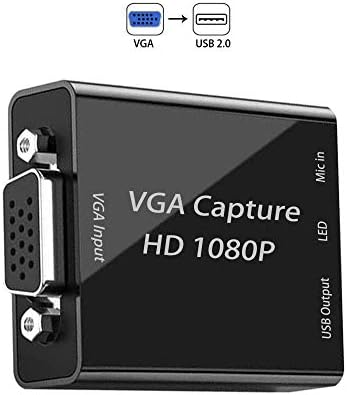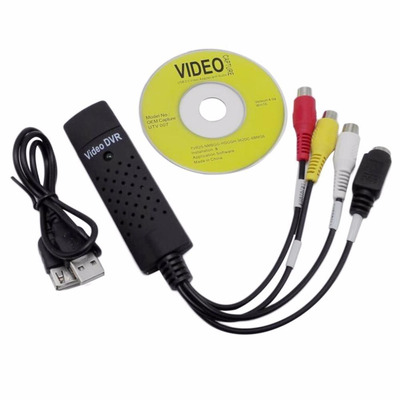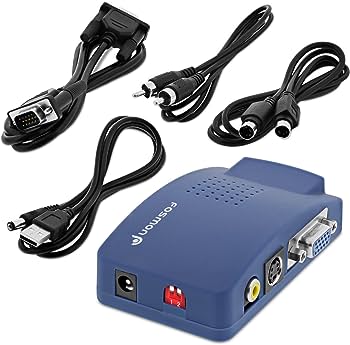Well, my Fosmon VGA to Composite Converter just died, I figured I'd give a little review of it here and tell what's next.
So my current setup is a late 2015 iMac 21.5" with a Amazon.com bought Composite/S-Video capture USB device, and I would feed my VGA machines into the composite device via a 1/8" stereo to RCA cable for sound, and the Fosmon for VGA.
Firs toff, that little purple Fosmon thing pretty cheaply built. The cables that came with it all crapped out on me in short order, and all they do is lay around on my desk. Later on I was using a 6 foot VGA cable with a pin removed to allow my Compaq Deskpro to be attached. This device was only really good for 640x480p and updward, but I would sometimes manage to force it to use 320x200 or other wacky DOS resolutions by using a laptop computer with it - usually an NEC Versa M/75, P/75, or NanTan FMA9200D - because the LCD controllers on those cause the screen to fit into the Fosmon's window properly in "SimulScan" or "CRT+LCD" mode depending on the computer we're talking about.
On my desktops however, the Fosmon would cut off the right side of the screen or the outer edges, and getting it properly stretched out would not work. Odd since I was using a totally different setup years ago and it worked great till it burned out. It seems the problem with these new Chinese Composite to VGA converters is that they are oriented at MODERN PCs using 640x480 or better resolution , and so the chipsets are limited to that resolution or ghigher, nothing below that. The telltale was when I ran things like Windows 3.1 or Windows 95 in 640x480 or 800x600, I would get the full screen, then drop to DOS and you'd get the edges cut off unless it was a later era laptop that put out a more compatible VGA signal.
THe other problem with the Fosmon was that it looked VERY dim and had poor contrast in Composite, and no adjusting of colors ever worked right with it. In S-Video it looked a lot better but there was a lot of color bleed meaning you had to really turn down the colors. However, the most incredibly janky thing with this device was that it could use either the menu, or two small dip-switches in a square on the side to change between PAL, NTSC-M, or NTSC-J, and I think even SECAM. And the dip switches were broken out of the box a little bit, so sometimes it'd freak out for no reason because the left DIP was "floating" a little bit and the contact made it unreliable.
Toward the end I started having power issues with it both because the soldering inside must have been bad and my USB-to-Barrel Jack cables kept going bad. That's why I ultimately scrapped it recently because I was getting sick of it being so problematic.
So now I'm thinking of trying a more "direct" solution for VGA......
So has anyone used these 1080 generic VGA Frame grabbers with Audio in at all? I'm thinking this might be a great solution, but I'm wondering if there's something I'm missing here, or any possibility this is meant for higher resolutions like the Fosmon? I may still end up getting it anyway to experiment and pioreer, just wondering if anyone else has used this type of thing before.







